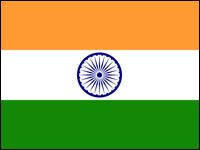
The Supreme Court of India last week struck down a law that curtailed the freedom of online speech. The law permitted arrests for posting “offensive” content online. The highest court in India ruled that Section 66(A) of the Information Technology Act was unconstitutional, and in its ruling said it had no hesitation in striking it down.
The court had examined the legality of the law, which made posting information considered grossly offensive or menacing in character punishable by up to three years in jail.
The law was challenged by law student Shreya Singhal after two women were arrested in 2012 for posting critical comments following politician Bal Thackeray’s death.
One of the women, Shaheen Dhada, was arrested for posting a comment on Facebook criticizing Mumbai’s shutdown upon news of Thackeray’s death. Renu Srinivasan, who only Liked the comment, also was arrested.
Since then, several other arrests have been made over comments posted on social media. The government defended the law, arguing that it was meant to deter people from uploading offensive material.
Vague Language
Section 66(A) was considered rather sweeping in its application. It could send a person to jail not only for comments made publicly via social media, but also in private email messages. India’s government used the law as the basis to block popular sites such as Vimeo and Archive.org.
“You don’t expect such a draconian law in the world’s largest democracy,” said Sadanand Dhume, resident fellow for the American Enterprise Institute.
“This is the sort of thing that happens in Russia, China or Turkey,” he told TechNewsWorld.
“It is a groundbreaking decision, as it ends a drift in the world’s largest democracy towards greater control of the Internet,” Dhume added.
Freedom of Speech Debate
India’s laws governing freedom of speech, including what can be said or posted online, are very different from those of the U.S.
“India doesn’t have a First Amendment,” explained Dhume.
“As a result, freedom of speech is relatively constrained compared to the United States,” he added. “You are not allowed to publish or say anything that could hurt religious sentiments.”
Moreover, it’s not just one side of the political spectrum that pushes for censorship in India.
“The previous government put this law in place, and the new government had a chance to overturn it but did not, and the current government in power argued that it should be maintained,” Dhume pointed out.
Nation of Old Ways
The civil divide in India isn’t drawn along party lines alone — tensions exists between many different groups. It isn’t so much a “red” vs. “blue” issue, but one that goes much deeper. To help ensure that strife doesn’t lead to violent outbursts, the government at times has clamped down in ways that appear inconsistent with democratic values.
“India is a moderate country, but it is a two-dimensional issue — the first being that there is a strong but old bureaucracy, and that it believes it knows what is right for its citizens,” said Aparna Pande, research fellow and director of the Initiative on the Future of India and South Asia at the Hudson Institute.
“Many of the laws don’t make sense to the modern age, but these were laws that were laid down during the British rule,” she told TechNewsWorld.
“There is the idea that citizens don’t know what is right for them,” Pande added.
The other side of the issue is that India’s government worries about tensions between religious groups — mainly Hindus and Muslims, but other groups as well, she said.
“The government doesn’t want something that is said online to cause a riot or other religious tensions,” Pande stressed.
“There are better ways to educate people, but the government feels it is easier to clamp down. That is easier and much faster,” she explained. “So as a result, India bans books, movies and music, because it is easier to ban something than to have an open debate.”
Cybercrime Prevention
Despite objections to the overreach of Section 66(A), it is noteworthy that the law did provide legal recourse for victims of a number of cybercrimes, including stalking, bullying, threatening through SMS and email, phishing and spamming. Due to last week’s judgment, those crimes are now left uncovered.
“A large part of the problem with 66(A) was that it was so badly drawn that it left room for authorities to exercise poor or even idiotic judgment,” said Charles King, principal analyst at Pund-IT.
“For example, the BBC noted that 66(A) had been used several times to arrest people and charge them with sedition for simply criticizing or complaining about local politicians,” he told TechNewsWorld.
“Though all were eventually released, those abuses of authority undermined any of the Section’s positive aspects,” King added.
“Pressing legalities beyond their logical limits is a common issue, but Section 66(A) is more of an example of what can happen when politicians posit a simplistic solution to a complex problem,” he noted.
Section 66(A) was just one part of the law at issue. In its ruling, the court actually upheld the validity of other parts of the IT Act, notably Section 69(B), as well as the 2011 guidelines that allowed the government to block websites if their content had the potential to create communal disturbance or social disorder, or affect India’s relationship with other nations.
“What we’ve seen with the ruling is that the court has stepped in to say that they won’t allow that overreach,” said AEI’s Dhume. “If you can strike down 66(A), everything else is small potatoes.”





















































